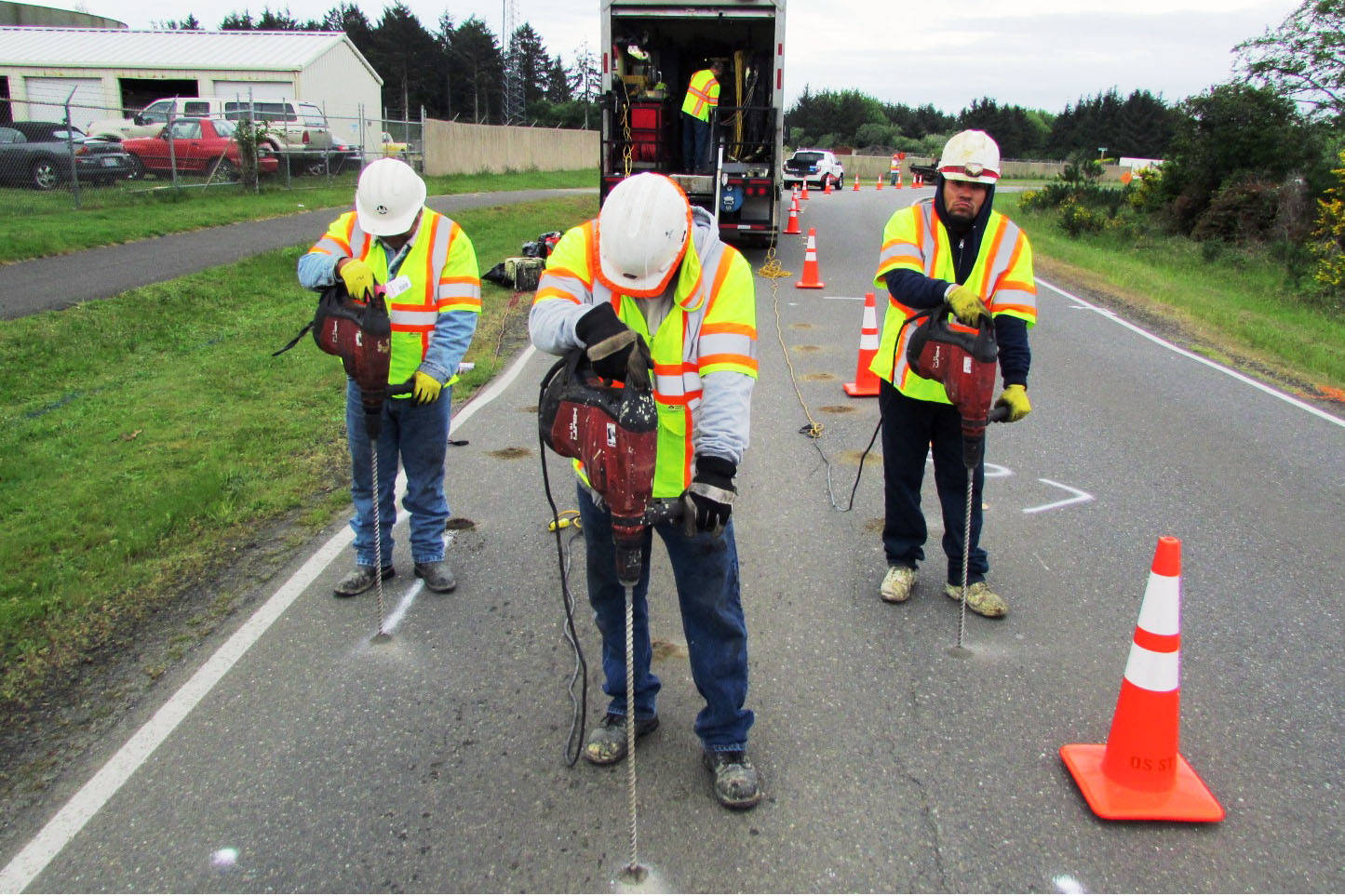By Scott D. Johnston
The street repair test done on Canal Drive last Thursday was “not the silver bullet or easy button we were hoping for,” Ocean Shores Public Works Director Nick Bird said. Still, the tryout of the polyurethane injection technique of roadbed stabilization and pavement lifting “helped us to learn about a new product that can and will be useful in Ocean Shores.”
The result for the big dip on Canal Drive is that “ride quality is significantly better, but still not perfect,” Bird said.
The test was conducted by Uretek USA, a Houston-based company that uses technology that was originally developed in Finland and has since been used around the world. Based on Bird’s recommendation, the Ocean Shores City Council on April 10 voted 5-2 to spend up to $15,000 on the roadway subgrade soil stabilization pilot test.
The basic concept is drilling small holes through the road surface, then injecting an expanding foam similar to a crack sealer to solidify the material in the roadbed and push up the pavement from beneath. John Schmidt, the Uretek project manager who led a crew from Portland, OR, on the job here, said the foam combines with the soil (in this case, mostly sand) to produce a strong and hard material they’ve nicknamed “man-made sandstone.”
The technique is seen as an alternative to the traditional “open cut” method of street repair where the surface and all materials beneath are removed down to a level where the sub-base is stable. Using that technique on the Canal Drive dip would have necessitated closing both lanes of the road for two days, while the injection and lifting was done in about five hours.
The test on Canal Drive was a tricky one, because the dip was thought to be caused, at least in part, by rotting timbers deep in the roadbed. Bird explained the void and unstable area beneath the pavement was a lot deeper than they expected to find.
“We had anticipated four feet, but the need was to go to five and a half feet,” he said. Also, deep in the roadbed, “we think we hit a log,” he explained. The foam apparently built up vertically to a point, but then, “we think the material just traveled along the log” rather than causing more pavement lifting.
On the road surface, the deepest points of the dip were about five inches. Ultimately, the Uretek process achieved about three inches of lift, leaving a less severe but still noticeable dip in the surface.
The original plan was to test the product and process in as many as seven places in Ocean Shores.
But the Canal Drive test ended up being the only one, because that location used far more material than anyone had anticipated, about 1,765 pounds, which translates to about 220 cubic feet.
Bird said the technique does not appear to be as economical as he had hoped, but he still believes the city may use it in some areas, possibly in combination with some overlay and milling.
He still sees advantages to avoiding the open cut method, both in speed or completing repairs and less damage to the road surface.



